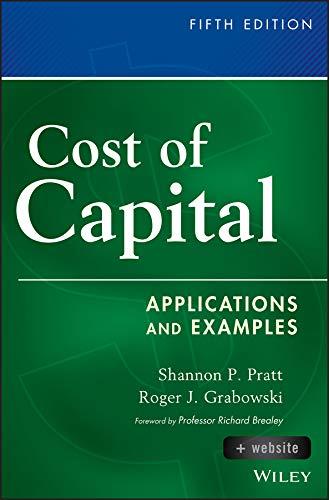Answered step by step
Verified Expert Solution
Question
1 Approved Answer
I need help with A, b,c, and e The excel to the right has been started so it needs to be in that format. Please

I need help with A, b,c, and e The excel to the right has been started so it needs to be in that format. Please show it in an excel spread sheet with formulas shown per cell. Etc.Thank you
A B C D E F G H J L M N 0 P Q R s T U V 1 2 3 A) 4 5 6 7 B Bond A PV current price PMT coupon rate face amount FV face amount for if callable, face amount call premium percent) NPER number of payments you will get/make Coupon the coupon amount (coupon rate face amount) -- divide by 2 if semi-annual yield/rate the market rate of interest for this bond For price, you will use PV formula to solve for price For yield to maturity, use the rate formula for current yield - it is PMT/current price ! 7-19 BOND VALUATION Clifford Clark is a recent retiree who is interested in investing some of his savings in corporate bonds. His financial planner has suggested the following bonds: Bond A has a 7% annual coupon, matures in 12 years, and has a $1,000 face value. Bond B has a 9% annual coupon, matures in 12 years, and has a $1,000 face value. Bond C has an 11% annual coupon, matures in 12 years, and has a $1,000 face value. Each bond has a yield to maturity of 9%. a. Before calculating the prices of the bonds, indicate whether each bond is trading at a premium, at a discount, or at par. b. Calculate the price of each of the three bonds. c. Calculate the current yield for cach of the three bonds. (Hint: Refer to footnote 6 for the definition of the current yield and to Table 7.1.) d. If the sted to maturity for each bond Temins at 9%, what will be the price of cach bond year romanow? What is the expeted capital gaile yield for each bond that is the expected to eat returultor each tacto e. Mr. Clark is considering another bond, Bond D. It has an 8% semiannual coupon and a $1,000 face value (i.e., it pays a $40 coupon every 6 months). Bond D is scheduled to mature in 9 years and has a price of $1,150. It is also callable in 5 years at a call price of $1,040 1. What is the bond's Degral yield to maturity? 2. What is the bond's empot yield to call? 3. If Mr. Clark were to purchase this bond, would he be more likely to receive the yield to maturity or yield to call? Explain your answer. f. Explain briefly the difference between price risk and reinvestment risk. Which of the following bonds has the most price risk? Which has the most reinvestment risk? A 1-year bond with a 9% annual coupon A 5-year bond with a 9% annual coupon A 5-year bond with a zero coupon A 10-year bond with a 9% annual coupon A 10-year bond with a zero coupon 9 10 11 12 13 14 15 16 17 18 19 20 21 22 23 24 25 26 27 28 29 30 31 32 33 34 35 there are three cash flows that are relevant - 11 the price paid initially 2) the payment amount (usually semi-annual or annual) 3) the payoff principal amount at the end #2 ad #3 are the same sign, #1 is the opposite signStep by Step Solution
There are 3 Steps involved in it
Step: 1

Get Instant Access to Expert-Tailored Solutions
See step-by-step solutions with expert insights and AI powered tools for academic success
Step: 2

Step: 3

Ace Your Homework with AI
Get the answers you need in no time with our AI-driven, step-by-step assistance
Get Started


